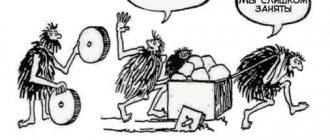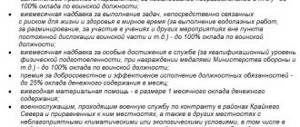The most common reasons for removal
To begin with, it should be said that removal from work is not a right, but an obligation of the employer.
It happens due to certain circumstances. The most common reasons include:
- the employee does not have a medical book with the necessary notes on his state of health;
- medical contraindications;
- lack of information about familiarization with internal labor protection rules at the enterprise;
- an employee coming to work in an inadequate state (drug, toxic, or alcohol intoxication).
There are other reasons for removal, but they are less common and are more likely of a targeted nature.
Form
When registering, you can do without a unified form. The act is drawn up in free form. The employer has the right to indicate here any information that it considers important. Here you need to display the essence of drawing up the document, namely, indicate that the employee appeared intoxicated.
Why is the act needed, its purpose
As practice shows, the employer is limited to a reprimand if the employee comes to work in such a state for the first time. Reprimands, remarks, and administrative sanctions are not excluded. But if these situations become regular, dismissing the employee is the only correct decision.
The employer needs a drawn up and correctly executed document. On its basis, he has the right to deprive the employee of a bonus, not to accrue wages for days of suspension, to cancel any incentives, and to dismiss. At the same time, it is possible that the employee will try to defend his case, perhaps even through the court or labor inspectorate. In this case, the employer will have to present this act, on the basis of which the judge will be able to confirm the legality of his actions.
( Video : “Drunk employee? Algorithm of the employer’s actions”)
Procedure for dismissal from work
You cannot simply dismiss an employee from work. To do this, you need to follow a certain procedure:
- The first step is to draw up a documentary basis in writing (for example, write an act), which must comply with the Labor Code of the Russian Federation (Article 76), as well as other federal laws and local regulations of the company.
- Then, on this basis, a separate order is drawn up, which specifies the reason for removal from work, as well as the position and full name of the employee.
Only after this can a person be removed from performing his official functions.
It should be noted that a work ban is always temporary, so the period of suspension must also be included in the order form.
What does it mean to remove an employee from work?
From a legal point of view, suspension from work represents the establishment by the employer of certain barriers to the subsequent fulfillment of his professional obligations by a subordinate. Such a decision can be made by the head of the enterprise or another authorized person only if there are the most compelling reasons. Moreover, the very fact of the existence of these grounds must be supported by appropriate evidence. If the removal of a subordinate occurred by a subjective decision of the superiors or at the request of the employee himself, the entire procedure in this case should be declared invalid.
It should be noted that the reasons for the official removal of a subordinate from his work have long been enshrined at the legislative level. There are quite a lot of them, but the main and most common such circumstances include the following:
- The appearance of a subordinate at his workplace in a state of alcohol or drug intoxication. Unfortunately, this reason can be called the most common. As you know, a person under the negative influence of various substances cannot be aware of his own actions. Consequently, his presence at the workplace can harm not only himself, but also those around him.
- Failure of an employee to pass a mandatory test for knowledge in the field of labor protection. The presence of such checks is regulated by applicable laws. In particular, the employer must take care to regularly communicate to employees information about the main provisions of labor protection in our state. The very fact of passing such a check must be recorded in writing. To do this, a corresponding entry is made in a special journal. If a certain employee does not pass the test, the employer will have full grounds for his forced removal from work.
- Failure by an employee to undergo a mandatory routine or primary medical examination. It should be noted that this fact will be a legal basis for compulsory removal only in some situations where such an examination is mandatory. If this requirement was not initially established for a specific position, then the employer will not be able to remove the employee.
- Detection of various health contraindications in an employee to fulfill current professional obligations. In this case, the employer will be obliged to formalize the removal, since the further performance of the labor functions assigned to the subordinate may result in serious harm to his health.
- Cancellation of an employee’s special right, the presence of which was a mandatory requirement for the performance of his professional duties. The most striking example here will be drivers of various organizations. Naturally, they will be able to perform their work functions only if they have a valid driver’s license. In case of their loss or cancellation, the employer is obliged not to allow the employee to work.
Who creates the order
The direct function of drawing up an order for removal can be included in the responsibilities of any employee of the organization who has certain knowledge of the Civil and Labor legislation of the Russian Federation, as well as experience in writing such orders. Typically this is:
- personnel officer;
- legal department specialist;
- secretary;
- director of the company.
At the same time, it is always worth remembering that regardless of who specifically writes the order, it is issued on behalf of the director of the enterprise and must be certified by him.
How to support an order
All orders issued in an organization must be based on something and justified in some way. Most often, the basis in this case is an official or memorandum from the head of the structural unit in which the suspended employee works, as well as an act that indicates a violation that led to removal from work. As a justification, you need to clearly formulate the reason, which is usually included in the document after the words “In connection with...”.
If you create an unsubstantiated order and do not make any references to legislation or internal documents of the company, in the event of inspections by regulatory organizations (for example, a labor inspectorate), it will be very easy to refute it, and even moreover, for the lack of grounds for writing the order , the company's management may be brought to administrative liability.
Who draws up the act
Typically, large enterprises appoint an employee who monitors how employees comply with labor discipline. It is he who will draw up this document. In addition, such a responsibility may be assigned to the secretary, head of a structural unit, or other employee. But you need to understand that the testimony of the person who fills out the document will not be enough. In addition to him, other employees must confirm the fact that the employee appeared drunk.
Attracting witnesses
Employees of the same enterprise can act as witnesses confirming the fact of appearing at work while drunk. A situation may arise where other employees do not want to testify against their colleague. But here you need to understand that if a drunk employee was noticed, there is no point in covering for him. The person completing the document must bring at least two witnesses. They must sign their autographs on the document. To ensure that there is no doubt about the correctness of drawing up this act, you need to try to ensure that the witnesses are employees of different departments or structural units.
Formation of an order for removal
To date, there is no standard unified sample order for suspension from work, so company representatives can write it in any form or according to the organization’s internal template. The only important thing is that the document in its structure complies with the norms of office work, and in its text and content - with the rules of the Russian language.
It is also necessary that the order include a list of certain information:
- the name of the company where it is published;
- its number according to the company’s internal document flow;
- date and place of compilation;
- position and last name, first name and patronymic of the employee who was suspended from work;
- the reason for creating the order (in other words, to indicate the essence of the claim against the employee);
- date or period of suspension from work;
- references to the basis and justification (the act in which the violation is recorded, a report or memo from the head of the department in which the suspended employee works).
After this, the head of the enterprise includes in the order the employees responsible for its execution (usually the head of a structural unit or a personnel officer, but if these positions are not available in the organization, the director can take on this function).
How to fill it out correctly
There is no standard form for an act of removal from work, but there are mandatory requirements for drawing up the document. You need to indicate the following:
- full name of the organization;
- place, date;
- position and full name paper compiler;
- position of witnesses (at least two people) and their full names, also in full;
- similar data about the employee suspended from work;
- time of violation;
- reasons (intoxication or other reason);
- signatures with transcripts from witnesses and the author of the form.
Be sure to decipher your full name. in full form and indicate the positions of the manager, witnesses, and the offending employee. In addition to this document, the situation may require the preparation and completion of accompanying forms.
When drawing up a form for an act of dismissal from work, it is necessary to disclose in detail and describe the circumstances that served as the reasons for this decision. Signs and all observed non-compliances and violations are also indicated. The more detailed the description, the fewer questions the employer will have in the event of litigation.
Rules for placing an order
There are no special criteria for both the content of the order and its execution, so you can write it by hand (with a ballpoint pen, but not in pencil) or in printed form. For the order, it is permissible to use an ordinary A4 sheet or the organization’s letterhead.
The completed order must be signed by the director of the enterprise or a person authorized to act on his behalf (the use of facsimile autographs, i.e. printed in any way, is not allowed). Also, the order must be signed by the persons responsible for its implementation and the employee who is suspended from work.
If the latter refuses to sign the director’s order, this does not become grounds for canceling the order. In such cases, another document is drawn up - an act of refusal to sign the order (for this, two witnesses should be involved).
There is now no strict need to certify an order using a seal or stamp, since from 2021 organizations are exempt from the obligation to use stamped products in their work (unless this norm is included in their local regulations).
After drawing up the document
The order is usually drawn up in a single copy, but if necessary, additional copies can be made.
After drawing up and endorsement in the prescribed manner, it should be registered in the internal log book.
Then, during the period of validity, it must lie along with other orders of the director in a place closed to unauthorized persons, and after its relevance has expired, it can be sent to the archive of the enterprise, where it must be stored for at least five years.











